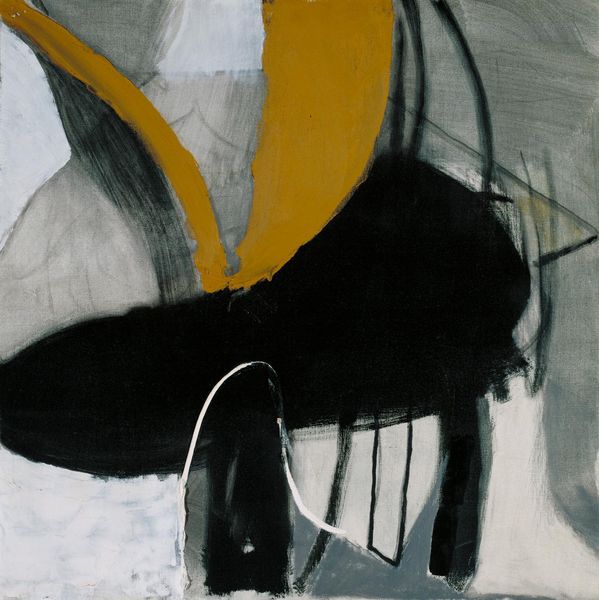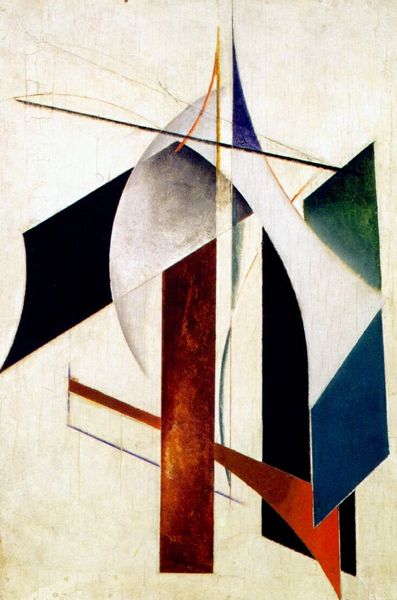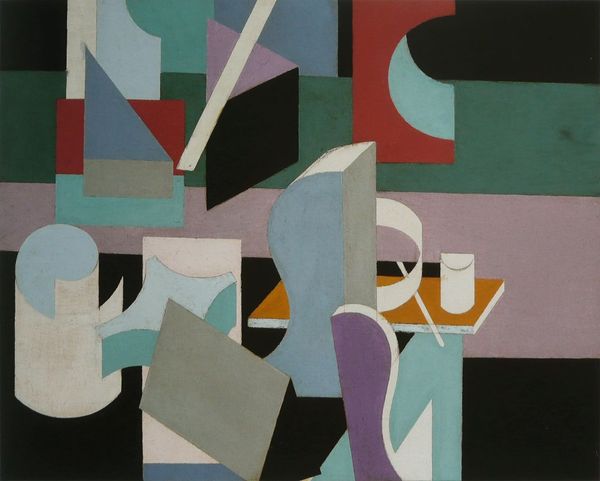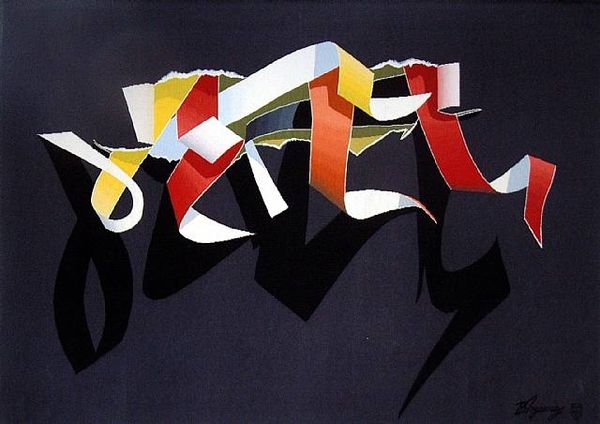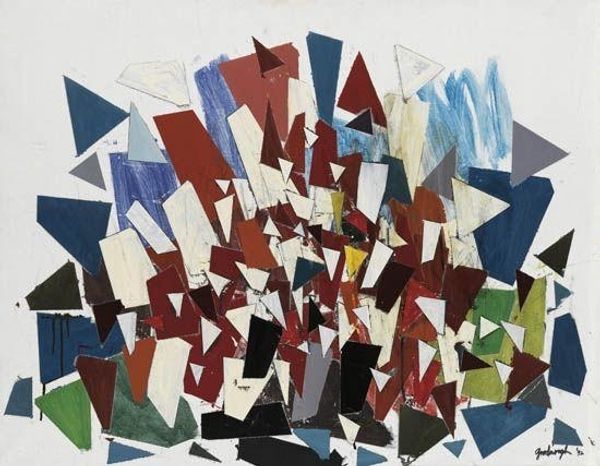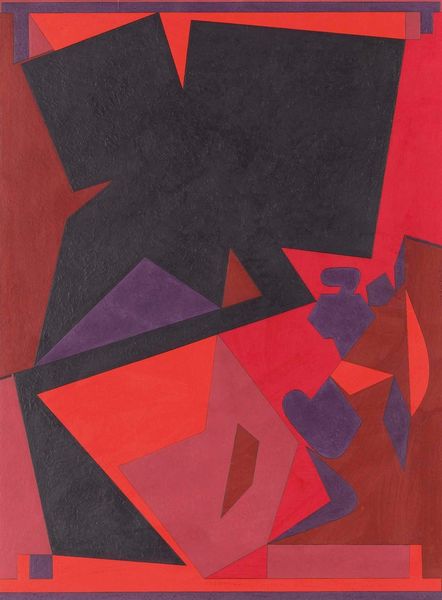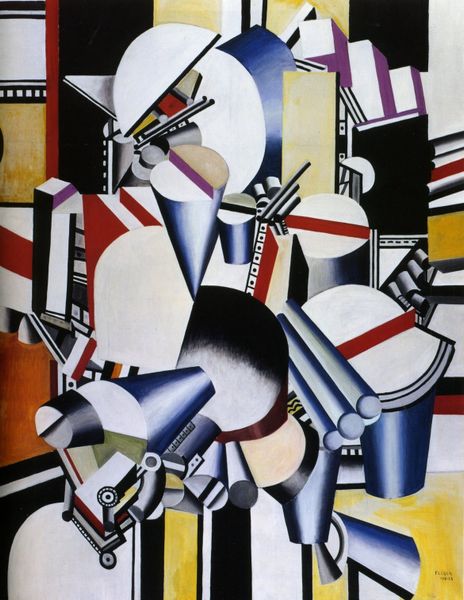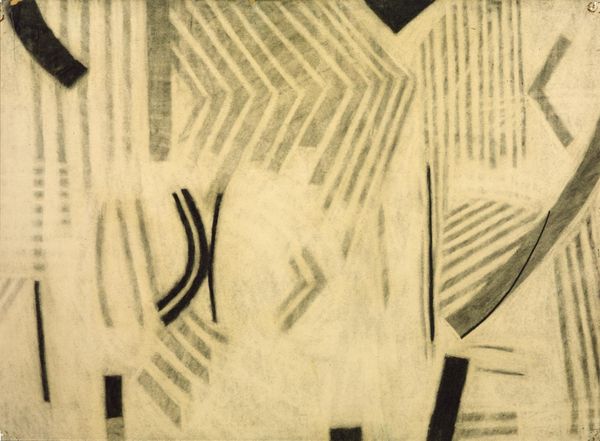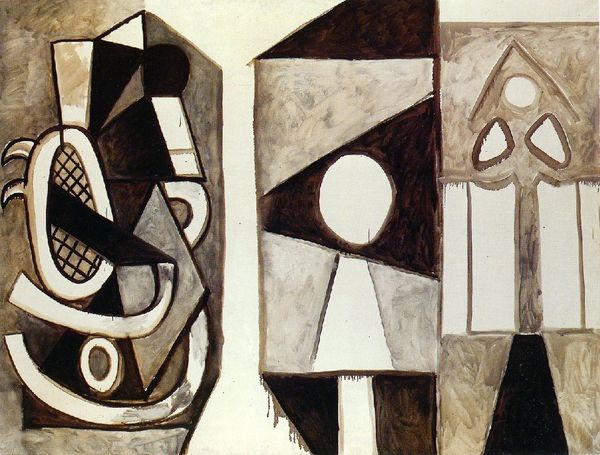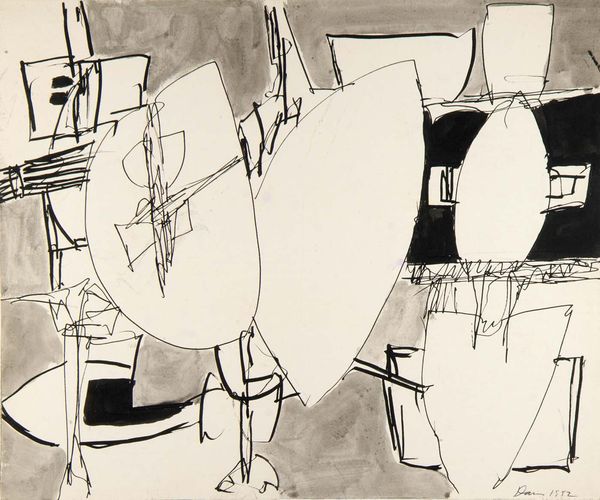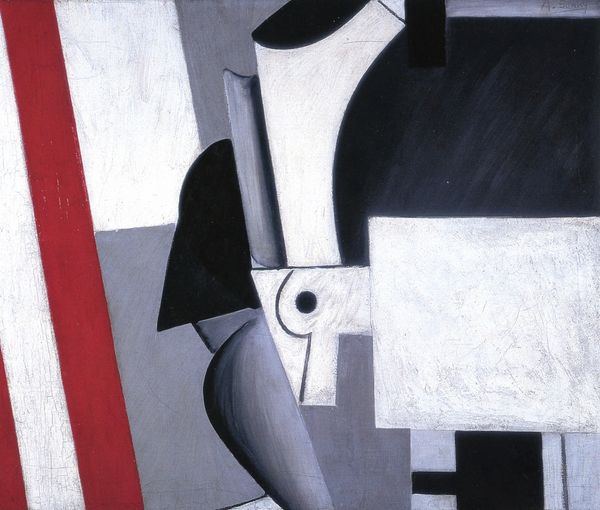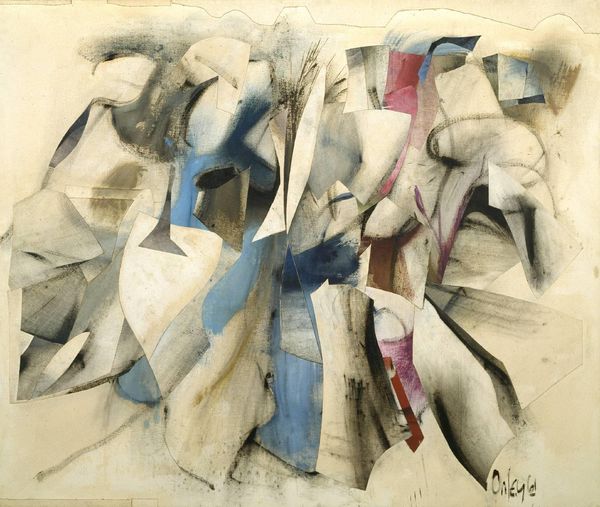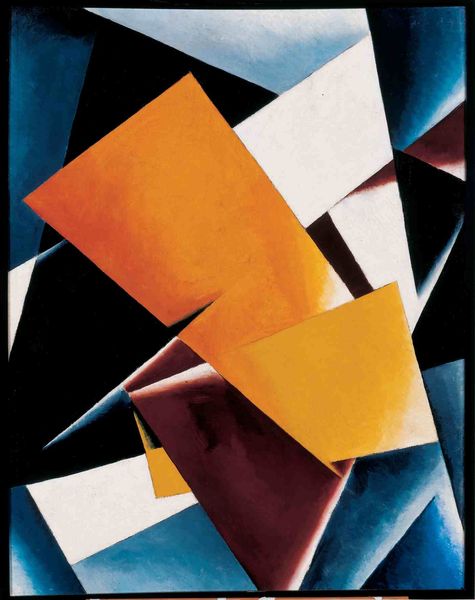
Copyright: Public domain US
Editor: This is Francis Picabia's "Ballerina on an Ocean Liner" from 1913, rendered in watercolor. I find the juxtaposition of geometric forms with these fluid lines intriguing. It has an almost mechanical feel but also suggests movement. What do you see in this piece? Curator: Focusing on the pictorial structure, note the strategic placement of contrasting geometric shapes—the interplay of the hard-edged rectangles with the soft curves. This juxtaposition creates a dynamic tension, does it not? The limited color palette of reds, blacks, and grays further emphasizes the formal qualities. Editor: Yes, I see that now! It’s less about depicting a literal ballerina or a ship, and more about the shapes. The horizontal line really anchors the composition, despite all the seeming chaos. Curator: Precisely. The semiotics of the forms matter too: Consider what these industrial forms evoke in relation to the organic, suggestive forms. This creates visual interest. Where do your eyes travel? Editor: They move around constantly! From the red rectangles to the heavy black shapes below and then back up again. It feels restless. Curator: And that is quite intentional, given the futurist movement. But, it also represents the transition into a newer century filled with faster pace in urban expansion. Overall, there's an impressive control of visual tension created through compositional balance. Editor: I understand better how analyzing the pure form gives so much insight into Picabia’s work, even divorced from any narrative interpretation. Curator: Indeed. Appreciating this balance of form is one important part of visual expression. It opens one’s understanding and appreciation.
Comments
No comments
Be the first to comment and join the conversation on the ultimate creative platform.

